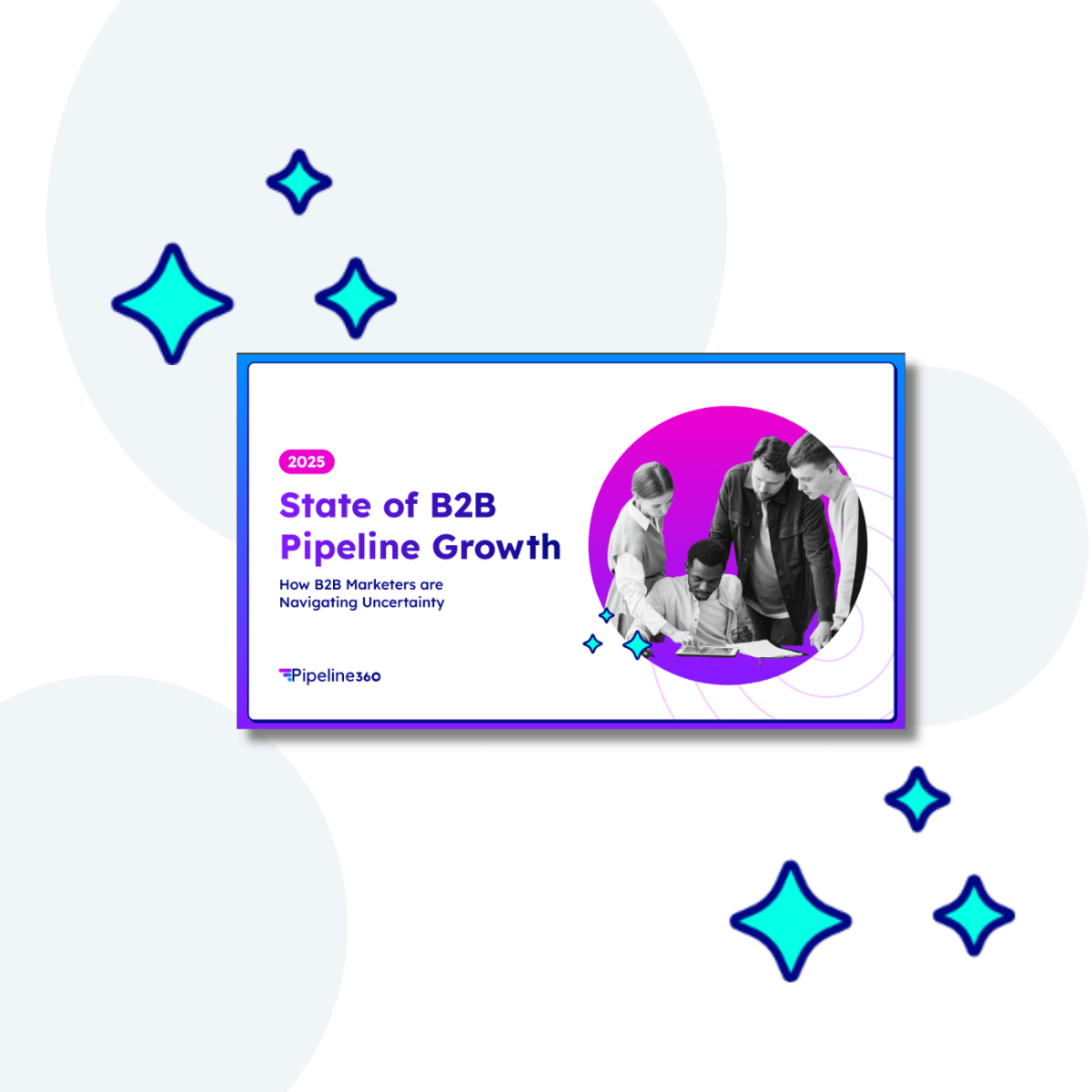More pipeline, higher ROI, more measurable results—the pressures continue to mount for B2B marketers. Success isn’t easy to deliver in an economic climate characterized by uncertainty and dwindling resources. Research reveals that a third of US teams admit to staff budget constraints. But despite the pain, some teams are not just surviving but thriving. High performers are four times more likely to meet or exceed their goals.
These teams are using data more intelligently to nurture leads. They’re ensuring sales and marketing are singing from the same hymn sheet. And they’re leveraging technology more effectively to prioritise insights over tools.
Why ROI is king
It’s not just economic uncertainty and resource challenges impacting B2B marketers today. A third complain of organizational misalignment, and many others point to unrealistic expectations, and challenges around data, engagement and content. Lengthening sales cycles and larger buying groups are also stymieing growth, by delaying investments and making it harder to identify new personas.
Against this backdrop, high performing teams know what matters, and are refocusing their KPIs around ROI. Half of these groups cite “revenue generated” as their most important metric, versus 44% of low performers. Tellingly, there’s also a big gap between high (44%) and low (20%) performers when it comes to using MQL metrics most frequently. The same is true of MQAs (34% vs 8%). In fact, top performing teams track more metrics overall – 3.5 on average vs 2.4 for low performers. In this climate, more insight is always preferable; it delivers a fuller picture of what’s working and what isn’t.
What high performers get right
Using the same research, we can point to other clear areas of differentiation between the leading marketing teams and the chasing pack. The most obvious is effective use of data, where there’s a 65-point gap between high and low performers. This really is foundational to everything else that follows—enabling marketers to better identify and engage with their potential customers, create more relevant content, and ultimately drive more conversions. It also empowers them to communicate their value to business leaders more effectively.
Data quality, compliance and accuracy are non-negotiable today. Teams looking to close the performance gap with their peers should start with a data audit to identify any gaps in collection, quality and usage. Improvements after that can be prioritized based on revenue-impact potential.
From effective data usage flows buyer engagement, where there’s a 60-point gap between high and low performers. Audience segmentation, buyer persona development, gathering of customer insights and vertical targeting would all benefit from a renewed focus on data quality and accuracy. As would the efficacy of content strategies—where there’s a 58-point performance gap—and lead nurturing (59 points). Relevant, compelling content is the key to triggering engagement and generating/nurturing leads.
Data-driven personalization at scale is now possible without the need for a huge investment of time or resource, thanks to generative AI tools. First, be sure to map existing content to buyer journey stages and personas, and then identify gaps to fill—prioritizing the creation of high-impact assets. AI can also help with the redesign of nurture sequences to align with specific buying group roles and behaviors.
On the subject of alignment, high performing marketing teams are also likely to experience less friction with their peers in sales than low performers. Shared KPIs, regular communication/feedback loops and collaborative account targeting and buyer identification can help here.
Scaling the peaks
When deployed together, these efforts reinforce each other to create a virtuous cycle of improvement. Better data leads to better engagement, more effective content, improved lead nurturing and conversions—with more aligned marketing and sales teams better able to identify and convert leads.
But let’s not forget one of the most critical factors in driving exceptional marketing performance: technology. Some 72% of high performers have streamlined tech stacks compared to just 12% of low performers. The truth is that marketers are often overwhelmed with point solutions—many of which may create capability overlaps and gaps without delivering the right business outcomes. It’s time for a different approach.
Instead of expending time, energy and resources managing everything in house, B2B marketing teams should consider outsourcing to an expert provider. A Demand-as-a-Service solution, for example, could help deliver the right outcomes at speed and scale—freeing up time for in-house talent to focus on strategy.
Driving improved outcomes today can also help guarantee optimal performance tomorrow: 65% of leading marketing teams benefit from budget increases. It’s time to kick start that virtual cycle and close the performance gap. The stakes couldn’t be higher.




